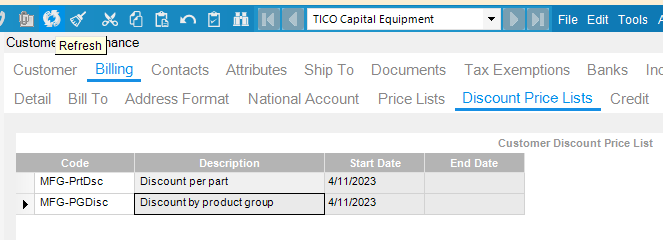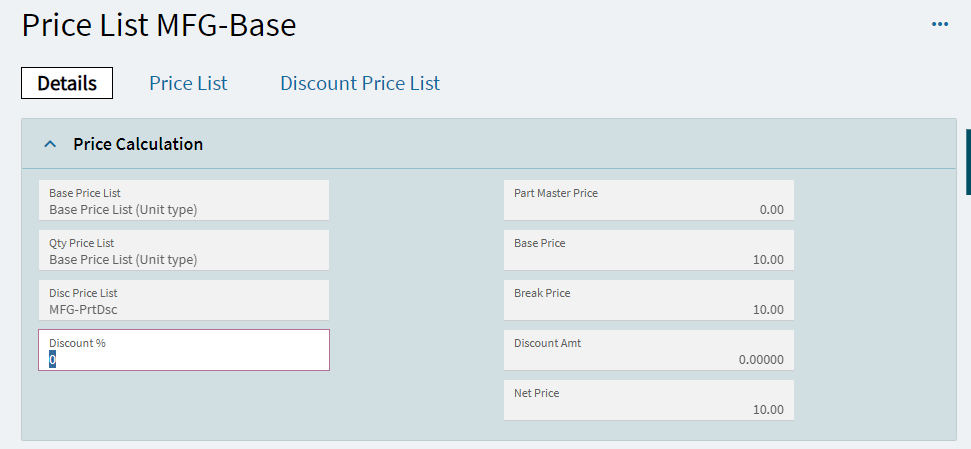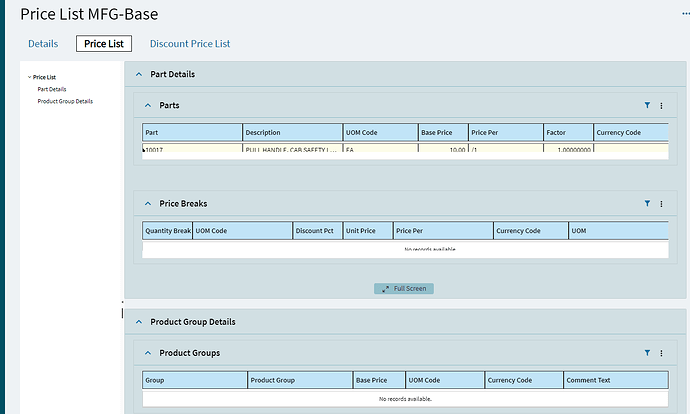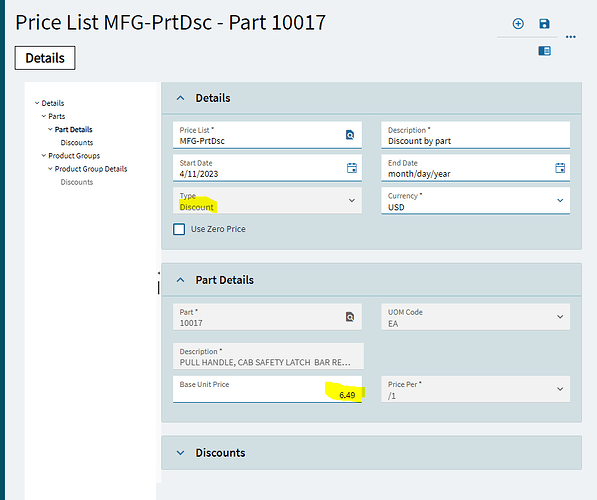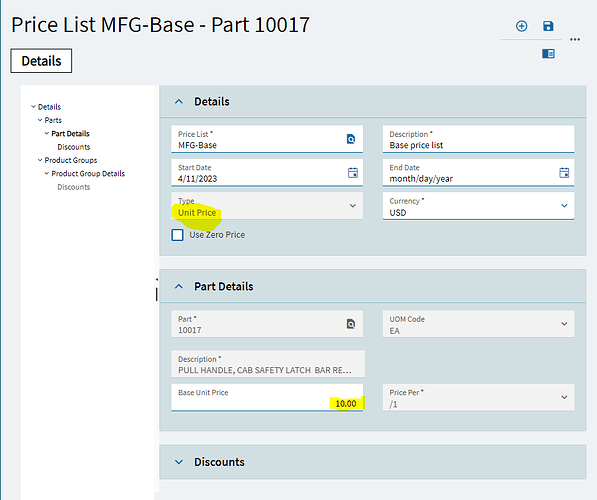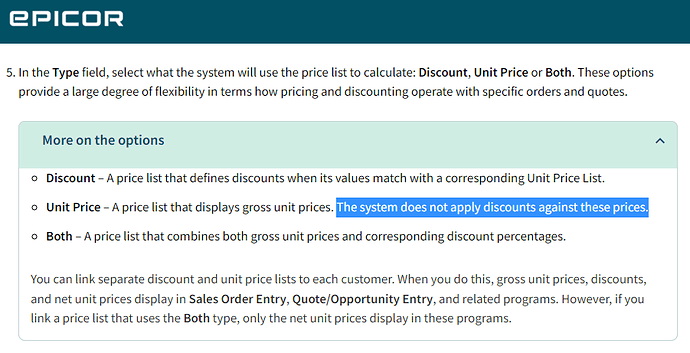Not quite.
We do have a price in the Part table. This is the “Base Price” that Product Group discounts apply to.
We have Customer Price Lists that are of type “Unit Price”. So there is a table of parts in the price list with specific Unit Pricing.
We have Customer Discount Price Lists that are of type “Discount” and are tied to Product Groups. So a Part could be assigned to a Product group and still be in a Customer Price List. The Customer could be assigned both a Customer Price List and Customer Discount Price Lists. This is where the issue is. Currently, if a Part is in a Customer Price List with a Unit Price and also in a Customer Discount Price List by Product group, the Group discount percentage is assigned to the Unit Price in the Customer Price List. We don’t want to apply any additional discounts to a Part that has been assigned a Unit Price from a Customer Price List.
I can make it work by making the Customer Price Lists Type “Both” with the Part lines of Type “Discount” and putting them all in as Customer Discount Price Lists, but I have to calculate the discount based on the current Base Price to come to the Unit Price. This is a maintenance disaster, but it does work because the Hierarchy of Discount Price Lists stops at the first Price List with a match. I am trying to find a way to get the process to stop when a match is found at the Customer Price List and not continue on to apply Discounts from the Customer Discount Price Lists as it did at one point.
Confused yet?
Customer Price List Type of Unit Price contains Table of Parts with Unit Price. (Used to be a part of the hierarchy of price lists, but is no longer)
Customer Discount Price Lists Type of “Discount” with Percentage discounts off of “Base Price” by Product Group. (Still in Hierarchy)
Part Table contains “Base Price” (Still in Hierarchy)
Part 301B Product group Blends Base Price 7.00.
Part 244P Product Group Parts Base Price 11.00
Part 144 Product Group of Inserts Base Price 2.00
Customer A has Customer Price List with 301B having Unit Price of 2.20 and Customer Discount price lists of 30% off on Blends and 20% off on Parts.
Customer A orders 301B, 244P, and 144.
Part Selling Price
301B 2.20 Is in Customer Price List and in Customer Discount Price List. Only Customer Price List should be applied (first price list)
244P 8.80 Is not in Customer Price List but is in Customer Discount Price List by Product Group
144 2.00 Is not in either Customer Price List or Customer Discount Price List by Product Group
Thanks, Zane


